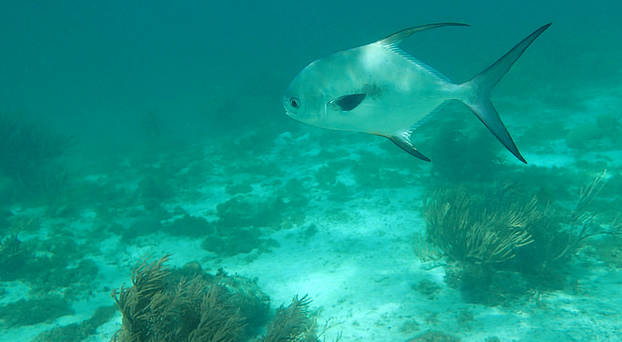Wild to go adventuring in old-time Belize
By Brian Irwin
Placencia, Belize / Boston Globe / Fly Fishing
[dropcap]T[/dropcap]his is a hot spot for saltwater fly-fishing. While Belize’s northern islands host polished lodges with gourmet meals and groomed bartenders, those to the south remain wild paradises where the fish are plentiful.

Think snook, bonefish, tarpon, and permit. Photo Yellow Dog fly Fishing Advevtures.
Placencia sits on the southern tip of the Placencia Peninsula, a 20-mile-long spit of land with a creamy-green lagoon on the west and the Caribbean Sea on the east. It holds a string of villages with names like Maya Beach and Seine Bight, and still-rustic throngs of shacks that provide a glimpse of what the peninsula must have been like until 1991, when power, phone, cable, and pavement were brought in. Before then homes were lighted by hurricane lamps, and families fished for tuna and lobster and lived in a bartering society where life was simple.
The peninsula has changed dramatically. Cozy cabanas line the beach, inexpensive but refined restaurants dot the sidewalks in town, and large vacation homes are starting to pop up. It’s an area recently discovered by a growing number of expatriates, some with deep pockets. On the northern end monstrous mansions are being erected and a casino will soon open. This paradise, whose amenities are still in their infancy, is on the verge of a tourism explosion.
But offshore, none of that is happening.
Eight miles off the southeastern coast Julian Cabral, 45, operates Whipray Caye Lodge, a rustic set of drafty bungalows that sit on this private, three-acre isle. Cabral is revered as one of the best saltwater fly-fishing guides in the area for the pursuit of tarpon, bonefish, and permit, three of angling’s most sought-after gamefish. . . .
NOTE: The only complaint that anglers staying in the town of Placencia have traditionally had about fishing the waters of Placencia was that each morning and afternoon required a long run from the mainland to the prime fishing areas. For those that would rather maximize their fishing time and eliminate the boat run altogether, then Julian and Beverly Cabral’s Whipray Caye may be the place for your next saltwater trip. Due to its prime location more than eight miles off the coast of Placencia, this is an operation that is perhaps best suited for the angler whose primary concern is long days on the water with lots of shots and opportunities above all else. – Yellow Dog
. . . Life is slow here but the fishing action is not. Shallow “flats,” patches of ocean that are only shin-deep, run thick with permit. Cabral seemed to have X-ray vision, peering through the glare to direct me where to cast as he pushed a battered wooden boat through the water with a long pole. “Tail, three-o-clock,” he’d say. I’d cast, feel a bump, a tug on the line, then nothing. Although we fished all day, they weren’t feeding and we came up with only one. Still, I had one of the best days I’ve ever had fishing. Cabral reminded me, “That’s why they call it fishing and not catching.”

There’s a hint here, think crab patterns. Photo courtesy of Yellow Dog Fly Fishing Adventures
Belize is a diverse country, mostly inhabited by Garifuna, Creole, and Maya people. The Garifuna stemmed from Europeans, blending their genes with West Africans who were brought here as slaves. Creoles have “Indian” blood in them, and the Maya folk date to one of the world’s great cultures, a kingdom that ruled this part of the world for a few thousand years. Belize holds the highest concentration of Maya ruins in Central America, none more spectacular than the giant temples of Xunantunich.
Xunantunich rests on the border with Guatemala in western Belize. We approached the ruin by crossing the Mopan River on a hand-cranked, single-car ferry. A short walk through the jungle opens to a breathtaking pyramid. First explored in 1890, the 130-foot-high stone structure was the epicenter of this civilization, one of the largest Mayan cities in the region. Viewed from the top of the main temple, the clouds seem to stick to the walls of the king’s palace, surrounding the peasant dwellings and forested hills that ripple out from the temple’s courtyard. Aerial ultrasound studies revealed that under this dense jungle, an entire city lies buried, with buildings in a 2-mile radius from its center.
Featured Image: By Dino Kanlic via Wikimedia Commons


